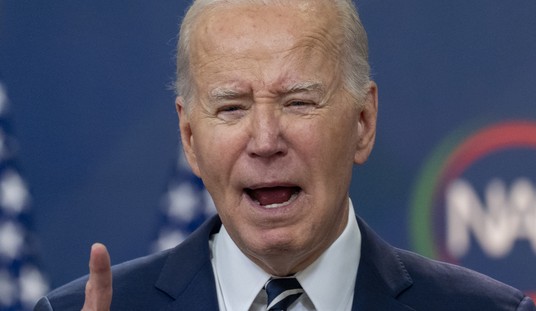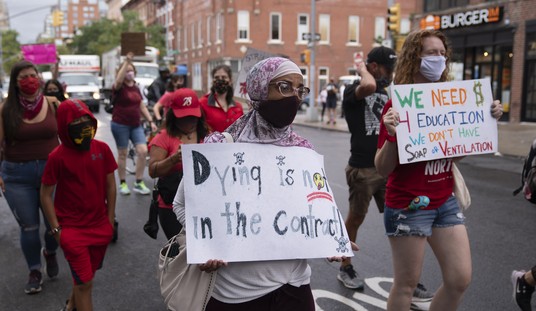There's a tried-and-true maxim on Wall Street: Stocks fall a lot faster than they rise. There are myriad examples, and the sharp plunge of 1987 is just one.
The economy was growing at a nice clip, corporate profits were on the rise, and investors were pouring into the market. And then, "Black Friday" came on October 19, 1987, pushing the S&P 500 down more than 20% in a single day. The fact that stocks had risen 250% in the previous five years led to a great deal of complacency, as few potential land mines stood on the horizon.

Looking back, we still don't even know what caused the crash. Some think it was due to computer-driven trading programs that fed off each other in a cycle of negativity, or that maybe underlying derivatives had lost enough value to cause a cascading effect of unwinding contracts. Others simply suggest that the market was due for a breather and a mild sell-off turned into a panic-driven rush for the exits as they day wore on.
We'll never know.
Fast-forward to 2012, and the skies are again seemingly clear. In fact, we've just emerged from a risky phase for the global economy, and the economic backdrop holds few land mines in the near-term. But still waters run deep, and you have to always think about the risks of a seemingly benign market mood. So it's simply prudent to make sure that, at this phase in the market cycle, your portfolio also contains a handful of deeply defensive stocks that will more likely hold their own if the major indices slump badly.
Here are five stocks that have "bomb shelter"-like qualities...
1. Abbott Labs (NYSE: ABT)
While many health care-related companies tend to focus on one core strengths such as insurance, hospital ownership, niche drug development or specialized medical devices, Abbott plays the field by selling hundreds of products to a range of customers. This will never be a fast-grower. Then again, sales have never fallen in any of the past 20 years. The current $40 billion revenue base benefits from a huge degree of recurring revenue and, thanks to modest annual price increases, management is always able to maintain 20% to 25% EBITDA margins regardless of any cost pressures the company may face.
Recommended
2. Archer Daniels Midland (NYSE: ADM)
The agricultural titan has its share of challenges. Profit margins can fluctuate as input prices and end-market prices gyrate back and forth. But because ADM controls so much of the agro-industrial complex, it is better insulated from the booms and busts that would rock its smaller rivals in the farm belt.
The timing for this stock is good. Analysts think margin trends will soon swing back in ADM's favor, which is why they think earnings per share (EPS) will rise from around $2.50 in fiscal (June) 2012 to around $3 in fiscal 2013 and $3.50 in fiscal 2014.
3. Verizon (NYSE: VZ)
No company has handled the migration from wire-line to wireless phones as adroitly as Verizon. Management has been steadily reducing expenses at the legacy wire-line business, freeing up resources to further cement its gains in the industry-leading wireless business. Even in adverse economic times, consumers would be loathe to cut back on their need to stay connected. Indeed today's smartphones are a lot like an addictive drug. Try going a week without one. The fact that Verizon currently sports a 5% dividend yield means shares have ample downside protection. Any sell-off in the stock would simply boost the yield, making it newly attractive to a fresh base of investors (whose buying would presumably push shares back up.)
4. Loews (NYSE: L)
There are plenty of insurance stocks that would represent safety in a plunging market. But Loews is so broadly diversified that it is insulated from the vagaries of any one particular insurance niche. Not only is Loews involved in all kinds of insurance, it also owns a hefty slate of energy assets, such as offshore drilling rigs and natural gas rigs and pipelines. The fact that the stock's current market value of $15.7 billion is actually lower than the book value of $18.8 billion just underscores the relative safety of this stock.
5. Southern Co. (NYSE: SO)
I could mention almost any power utility, but Southern Co. is an exemplary industry play. The company's 4.6% return on assets (ROA) and 12.3% return on equity (ROE) are among the best in the business. The fact that the company's dividend grows about 4% every year would surely be noticed by investors as they made a flight to safety. If you buy shares today, you'll be getting a yield of about 4%, but thanks to the power of compounding, you could be scoring double-digit annual yields (based on your original cost) if you hold this stock into the next decade.
Risks to Consider: These stocks are unlikely to fall nearly as much as the broader market in a major sell-off, but would likely take a moderate hit as investors pull funds.
Action to take --> Building a portfolio around these kinds of stocks is suitable for the most conservative investors, especially those nearing retirement. For more aggressive investors, you need simply to think about having a degree of exposure to these safer stocks, even as you remain more squarely focused on high-beta stocks that are leveraged to a growing economy.
David Sterman does not personally hold positions in any securities mentioned in this article. StreetAuthority LLC does not hold positions in any securities mentioned in this article.
This article originally appeared at www.streetauthority.com
























Join the conversation as a VIP Member